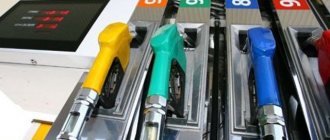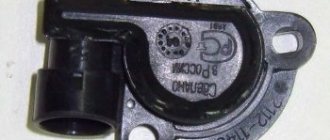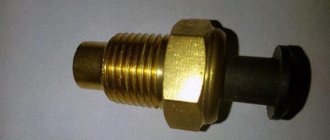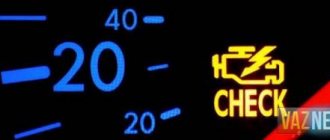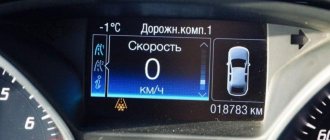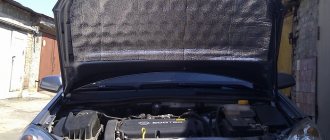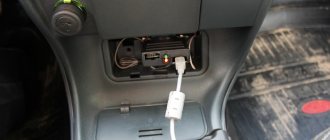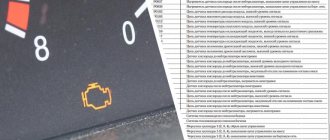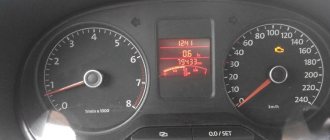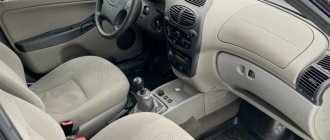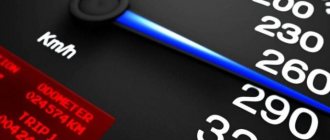Car errors: searching and deleting codes
A person who has just bought a brand new car and has no driving experience often asks questions about car error codes, what do they mean and how to eliminate them?
Car error codes come in different types, depending on the car model. In a modern car, which operates electronically, in most cases it is equipped with self-diagnosis, which sees any malfunction of the car and informs the car owner about it in the form of an error code.
What do you need to know about the Check Engine Light?
Some drivers try to clear the engine error by disconnecting the battery. These manipulations really allow you to get rid of the problem. However, the lamp may light up again after a while. This means that no typical reason is suitable for this situation, and it turns out that it is necessary to perform a more in-depth diagnosis.
For this purpose, special software and hardware systems are used, which not only find any errors in the operation of the ECU and engine, but also know how to eliminate them. If the error was resolved during the tests, the lamp will go out. In some cases, it is necessary to drive the car for some time to reset the error. This may be due to the fact that the control unit needs time for in-depth testing and debugging of the operation of all car systems. If the lamp does not go out, you need to continue searching for the problem.
Tips for finding errors in cars
When diagnosing a car for errors, look at the length of the cable that goes from the scanner to the computer - it should not exceed 5 meters. If the cable is more than five meters, the diagnosis may be incorrect
After you have purchased a scanner, carefully read the operating instructions.
You should turn on the ignition in the car only after connecting the scanner to the computer and completing the settings. This is necessary in order to exclude the possibility of damage to the on-board computer.
VAZ
To independently diagnose a VAZ, you can also use the diagnostic connector, but it is also permissible to do this by the vehicle itself. To do this, you need to hold down the odometer button, then turn the key to the first position, then release the button. After this, the arrows will jump.
Then the odometer is pressed again - the driver will see the firmware number. When pressed a third time, you can get a diagnostic code. Any VAZ engine error in a car will be presented as two digits, not four. They can be deciphered using the corresponding tables.
The information provided can help experienced and novice car enthusiasts better understand their car. Errors arise from time to time, but the main thing is to be able to eliminate them in a timely manner. Previously, there were no such options in Soviet cars, and the driver could not know what the engine was “swearing” at. Today there are many possibilities for diagnostics, repair, and condition monitoring. And with the help of modern software, there is nothing easier than figuring out how to reset an engine error from the ECU memory.
Diagnosis of car errors
You can diagnose a car yourself not only using a computer, but also using mobile applications on the Android or Apple platform. There are many different applications on the Internet for this procedure, some of them can read vehicle code errors, find the cause and eliminate them. For example, for the OBD-II scanner there are special programs for Android that will tell you about all the car error codes and methods for eliminating them. In order to download it, you need to enter the name of the application on the play market “Deciphering OBD-II error codes”. In these programs you will find a lot of useful things, but the main thing is that the database contains all the car error codes.
If you use an Apple phone, then there is simply an ideal application for you to know what error codes are in your car, the program itself eliminates or deletes them. The application is sold with a cable for connection to the car. GoPoint Techonogy – works with GL-1 and BT-1 scanners. The scanner data and applications are official Apple applications, where GL-1 is a cable for connecting the car to the phone, and BT is a Bluetooth transmitter. The program not only helps eliminate car code errors, but also checks the operation of the engine, all sensors and much more. These two scanner-transmitters not only work with the native GoPoint Techonogy program, but are also compatible with DashCommand.
There are many applications, programs, scanners with which you can identify car error codes and eliminate them yourself. These maintenance services will cost a lot of money, but why pay for something you can do yourself? To use these applications, it is not necessary to have a professional level of computers and gadgets; you just need to know how to install the application. And may your car last for many years!
Fuel filler cap
Most drivers, when an error occurs, always think about the existence of very serious problems. But few people think to check whether the fuel system is tight. But this same tightness can be easily broken by a gas tank cap that is not tightly closed. And this is a fairly common situation!
What does this have to do with engine error? The fact is that when the lid is not tightly closed, air passes into the system, which increases fuel consumption. Because of this, the diagnostic system generates an error.
Diagnostic codes for ECU Mikas 10.3/11 Euro-2 / Euro-3
- P0101 - Mass air flow sensor signal out of acceptable range
- P0102 - Mass Air Flow Sensor Circuit Low
- P0103 - Mass Air Flow Sensor Circuit High
- P0106 - Absolute pressure sensor signal out of acceptable range
- P0107 - Intake Air Absolute Pressure Sensor Circuit Low
- P0108 - Intake Air Absolute Pressure Sensor Circuit High
- P0112 - Air Temperature Sensor Circuit Low
- P0113 - Air Temperature Sensor Circuit High
- P0116 - Coolant temperature sensor signal out of acceptable range
- P0117 - Coolant Temperature Sensor Circuit Low
- P0118 - Coolant Temperature Sensor Circuit High
- P0121 - Throttle position sensor signal out of range
- P0122 - Throttle Position Sensor Circuit Low
- P0123 - Throttle Position Sensor Circuit High
- P0130 - Oxygen sensor No. 1 circuit faulty
- P0131 - Low signal level of oxygen sensor No. 1, to the converter
- P0132 - High signal level of oxygen sensor No. 1, to the converter
- P0133 - Slow response to rich or lean oxygen sensor No. 1
- P0134 - Open circuit of oxygen sensor No. 1
- P0135 - No. 1 Oxygen Sensor Heater Malfunction
- P0136 - No. 2 Oxygen Sensor Circuit Malfunction
- P0137 - Low signal level of oxygen sensor No. 2 (after the converter)
- P0138 - High signal level of oxygen sensor No. 2 (after the converter)
- P0140 - Oxygen sensor signal circuit open No. 2
- P0141 - No. 2 Oxygen Sensor Heater Malfunction
- P0171 - Fuel system too lean
- P0172 - Fuel system too rich
- P0200 - Injector control circuit faulty
- P0201 - Injector 1 control circuit open
- P0202 - Injector 2 control circuit open
- P0203 - Injector 3 control circuit open
- P0204 - Injector 4 control circuit open
- P0217 - Engine cooling system overheating
- P0219 - Exceeding the permissible engine speed
- P0222 - No. 2 Throttle Position Sensor Circuit Low
- P0223 - No. 2 Throttle Position Sensor Circuit High
- P0230 - Fuel pump relay control circuit malfunction
- P0261 - Injector 1 control circuit short to ground
- P0262 - Short circuit to power supply or open circuit of injector 1
- P0263 - Injector 1 driver faulty
- P0264 - Injector 2 control circuit short to ground
- P0265 - Short circuit to the on-board network or open circuit of injector 2
- P0266 - Injector 2 driver faulty
- P0267 - Injector 3 control circuit short to ground
- P0268 - Short circuit to power supply or open circuit of injector 2
- P0269 - Injector 3 driver faulty
- P0270 - Injector 4 control circuit short to ground
- P0271 - Short circuit to the on-board network or open circuit of injector 4
- P0272 - Injector 4 driver faulty
- P0297 - Vehicle speed exceeded
- P0300 - Random/Multiple Misfires
- P0301 - Misfire in cylinder 1
- P0302 - Misfire in cylinder 2
- P0303 - Misfire in cylinder 3
- P0304 - Misfire in cylinder 4
- P0325 - Knock sensor circuit open
- P0327 - Knock Sensor Circuit Low
- P0328 - Knock Sensor Circuit High
- P0335 - Crankshaft Position Sensor Circuit Malfunction
- P0336 - Crankshaft Position Sensor Signal Out of Range
- P0337 - Crankshaft position sensor circuit short to ground
- P0338 - Crankshaft position sensor circuit open
- P0340 - Camshaft Position Sensor (Phase Sensor) Circuit Malfunction
- P0342 - Camshaft Position Sensor (Phase Sensor) Circuit Low
- P0343 - Camshaft Position Sensor (Phase Sensor) Circuit High
- P0351 - Ignition coil 1 primary circuit open
- P0352 - Ignition coil 2 primary circuit open
- P0353 - Ignition coil 3 primary circuit open
- P0354 - Ignition coil 4 primary circuit open
- P0422 - Neutralizer efficiency is below acceptable
- P0441 - Incorrect air flow through the canister purge valve
- P0443 - Canister purge valve control circuit malfunction
- P0444 - Short circuit to the on-board network or open circuit of the canister purge valve control circuit
- P0445 - Short circuit to ground, canister purge valve control circuit
- P0480 - No. 1 Fan Relay Control Circuit Malfunction
- P0481 - No. 2 Fan Relay Control Circuit Malfunction
- P0500 - No signal from vehicle speed sensor
- P0501 - Speed Sensor Circuit Malfunction
- P0503 - Speed sensor signal intermittent
- P0505 - Idle Air Control Circuit Malfunction
- P0506 - Low idle speed (idle speed control locked)
- P0507 - High idle speed (idle speed control locked)
- P0508 - Idle speed control circuit short circuit to ground
- P0509 - Short circuit of the idle speed control stepper control circuit to the on-board network
- P0511 - Open circuit for idle speed control stepper control
- P0560 - On-board voltage below operating threshold
- P0562 - Undervoltage on-board network
- P0563 - On-board network voltage too high
- P0572 - Brake Pedal Switch A: Signal Low
- P0573 - Brake Pedal Switch A: High Signal
- P0601 - Controller ROM failure
- P0602 - Controller RAM failure
- P0603 - Controller internal RAM failure
- P0604 - Controller external RAM failure
- P0615 - Starter relay control circuit open
- P0616 - Starter relay control circuit short to ground
- P0617 - Short circuit to the starter relay control circuit
- P0627 - Fuel pump relay control circuit open
- P0628 - Fuel pump relay control circuit short to ground
- P0629 - Short circuit to the on-board network of the fuel pump relay control circuit
- P0630 - VIN storage fault or vehicle VIN is not written to the controller
- P0645 - Open air conditioner clutch relay control circuit
- P0646 - A/C clutch relay circuit short to ground
- P0647 - Short circuit to the on-board network of the air conditioner clutch relay circuit
- P0650 - Check engine lamp circuit malfunction
- P0654 - Instrument panel tachometer circuit malfunction
- P0685 - Main relay control circuit open
- P0687 - Short circuit to main relay control circuit
- P0688 - Open circuit from the main relay output
- P0690 - Short circuit to main relay power circuit
- P0719 - Brake pedal switch B: signal low
- P0724 - Brake pedal switch B: high signal level
- P0831 - Clutch pedal switch A: low signal level
- P0832 - Clutch pedal switch A: high signal level
- P1102 - Oxygen Sensor No. 1 Heater Resistance Low
- P1115 - Oxygen Sensor No. 1 Heater Control Circuit Malfunction
- P1123 - Mixture "rich" - additive correction of the air-fuel mixture exceeds the set threshold
- P1124 - Composition “lean” - additive correction of the air-fuel mixture exceeds the set threshold
- P1127 - Mixture “rich” - multiplicative correction of the fuel-air mixture composition exceeds the set threshold
- P1128 - Composition “lean” - multiplicative correction of the fuel-air mixture composition exceeds the set threshold
- P1135 - No. 1 Oxygen Sensor Heater Malfunction
- P1136 - Mixture "rich" - additive correction of the fuel-air mixture for fuel exceeds the set threshold
- P1137 - Composition “lean” - additive correction of the fuel-air mixture for fuel exceeds the set threshold
- P1140 - Incorrect air flow sensor signal
- P1141 - No. 2 Oxygen Sensor Heater Malfunction
- P1171 - CO potentiometer signal low
- P1172 - High signal level of the CO potentiometer
- P1386 - Knock Channel Internal Test Error
- P1410 - Short circuit to the on-board network or open circuit for the control circuit of the canister purge valve
- P1425 - Short circuit to ground of the canister purge valve control circuit
- P1426 - Open circuit for controlling the canister purge valve
- P1500 - Fuel pump relay control circuit open
- P1501 - Fuel pump relay control circuit short to ground
- P1502 - Short circuit to the on-board network or open circuit of the fuel pump relay
- P1509 - Idle Air Control Circuit Overload
- P1513 - Idle air control control circuit short to ground
- P1514 - Short circuit to the on-board network or open circuit of the idle air regulator control circuit
- P1541 - Fuel pump relay control circuit open
- P1570 - No response from APS (immobilizer) or open circuit
- P1571 - Unregistered electronic key used
- P1572 - Immobilizer antenna breakage
- P1573 - Internal malfunction of the APS unit (immobilizer)
- P1600 - No communication with APS (immobilizer)
- P1601 - No communication with APS (immobilizer)
- P1602 - Loss of on-board voltage
- P1603 - Controller EEPROM fault
- P1606 - Rough Road Sensor Invalid Signal
- P1612 - Controller reset error
- P1616 - Rough road sensor signal low
- P1617 - Rough road sensor signal high
- P1620 - Controller ROM failure
- P1621 - Controller RAM failure
- P1622 - Controller EEPROM fault
- P1632 - Malfunction of spring 1 of the electric throttle valve
- P1633 - Malfunction of spring 2 of the electric throttle valve
- P1634 - Malfunction of the throttle valve adaptation procedure
- P1635 - Malfunction of the procedure for adapting the closed position of the electric throttle valve
- P1636 - Malfunction of the procedure for adapting the de-energized position of the electric throttle drive
- P1640 - Failure to access controller EEPROM
- P1689 - Invalid error codes in the controller memory
- P1750 - Short circuit to the on-board network of circuit No. 1 for controlling the idle speed regulator
- P1751 - Open circuit No. 1 of the idle speed control torque control
- P1752 - Short circuit to ground in idle speed control circuit No. 1
- P1753 - Short circuit to the on-board network of circuit No. 2 for controlling the idle speed regulator
- P1754 - Open circuit No. 2 of the idle speed control torque control
- P1755 - Short circuit to ground of circuit No. 2 of idle speed control torque control
- P2104 - Throttle valve electric drive control system: limiting the operation of the internal combustion engine to the OMV mode
- P2105 - Throttle valve electric drive control system: internal combustion engine operation prohibited
- P2106 - Electric throttle control system: power limitation
- P2110 - Electric throttle control system: speed limitation
- P2112 - Electric throttle control system: position controller error in opening direction
- P2113 - Electric throttle control system: position controller error in closing direction
- P2122 - Low signal level of the electric accelerator pedal position sensor No. 1
- P2123 - Low signal level of the electric accelerator pedal position sensor No. 1
- P2127 - High signal level of the electric accelerator pedal position sensor No. 2
- P2128 - High signal level of the electric accelerator pedal position sensor No. 2
- P2135 - Throttle position sensor correlation error
- P2138 - Correlation error of electric accelerator pedal position sensors
- P2299 - Brake pedal position sensor error
- P2301 - Euro-2: Short circuit to the on-board network of the ignition coil 1 circuit
- P2303 - Euro-2: Short circuit to the on-board network of the ignition coil 2 circuit
- P2305 - Euro-2: Short circuit to the on-board network of the ignition coil 3 circuit
- P2307 - Euro-2: Short circuit to the on-board network of the ignition coil 4 circuit
- P2301 - Euro-3: Short circuit to the on-board network of the ignition coil 1 circuit
- P2304 - Euro-3: Short circuit to the on-board network of the ignition coil 2 circuit
- P2307 - Euro-3: Short circuit to the on-board network of the ignition coil 3 circuit
- P2310 - Euro-3: Short circuit to the on-board network of the ignition coil 4 circuit
